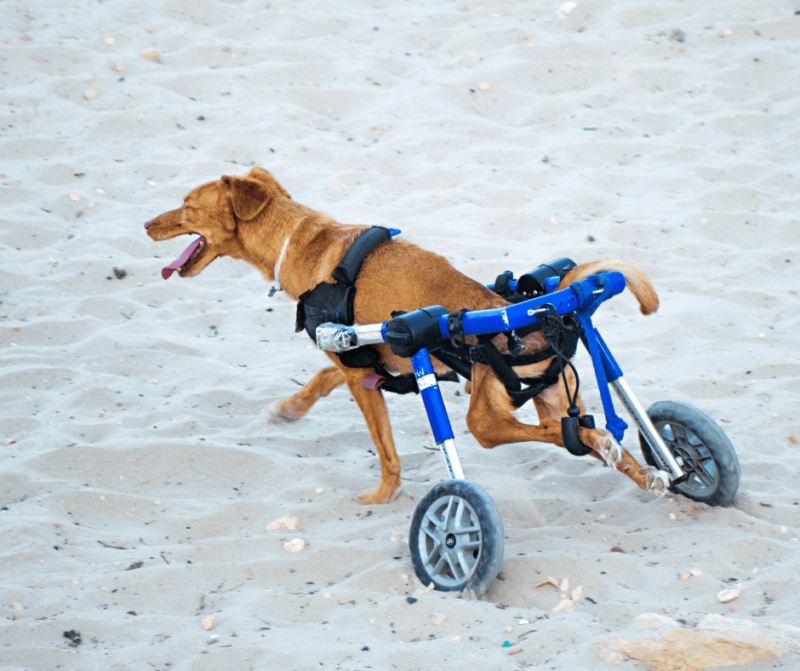Large dog wheelchairs ease mobility in dogs with handicaps like hip dysplasia, spinal injuries, arthritis, or paralysis.
They have a metal frame, wheels, and a harness supporting the dog. It suits your dog’s size and offers varying degrees of support.

A major asset of a large dog wheelchair is that it gives your pet the chance to regain mobility and move freely, leading to better overall health.
It also offers a sense of relief to us knowing, we can improve our pet’s life.
If you’re unsure if your dog requires a wheelchair, watch for signs of discomfort or difficulty walking.
Are There Changes in Your Dog’s Gait or Stance?
Changes in how your dog walks or stands can indicate joint or muscle pain that may cause mobility issues.
Physical therapy and medication may help alleviate these symptoms.
Is Your Dog Reluctant to Jump or Climb Stairs?
If your dog is hesitant to jump or climb stairs, it could be due to joint pain or muscle weakness.
Treatment options can include medication, physical therapy, or weight management.
Is Your Dog Limping or Favoring a Leg?
Limping or favoring a leg may be a sign of injury or arthritis, resulting in mobility issues.
Treatment options can include rest, medication, surgery, or physical therapy.
Is Your Dog Showing Reduced Activity Level or Fatigue?
Joint pain or obesity may result in reduced activity levels or fatigue.
To improve their energy levels and overall health, you can give them regular exercise and a healthy diet.
Is Your Dog Experiencing Difficulties Rising or Lying Down?
Mobility issues may cause arthritis or muscle weakness, resulting in difficulties rising or lying down.
Treatment options can include medication, rest, and physical therapy.
Is Your Dog Experiencing Stiffness or Discomfort After Exercise?
Joint pain or muscle strain may cause stiffness or discomfort after exercise, resulting in mobility issues.
Regular exercise and physical therapy may help alleviate these symptoms.
Consult with your vet to determine whether your dog needs it. When choosing, consider your dog’s size, weight, and ask about the wheelchair’s features.
Getting our dog used to the wheelchair takes time and patience. Allow your dog to inspect the wheelchair indoors. After attaching your dog to the harness, let them adjust to the wheels’ support. Gradually increase the time your dog spends in the wheelchair.
In terms of upkeep, disinfect wheelchair parts to prevent infections, and replace wheels when required. Proper maintenance prolongs its lifespan and keeps your dog comfy.
A large dog wheelchair can improve the lives of our dogs with mobility issues. We should invest in a quality wheelchair and help our pets adjust to it.
We should enjoy the newfound freedom our beloved pet will have with a doggie wheelchair, it also, wouldn’t hurt to speak to our vet for guidance.
